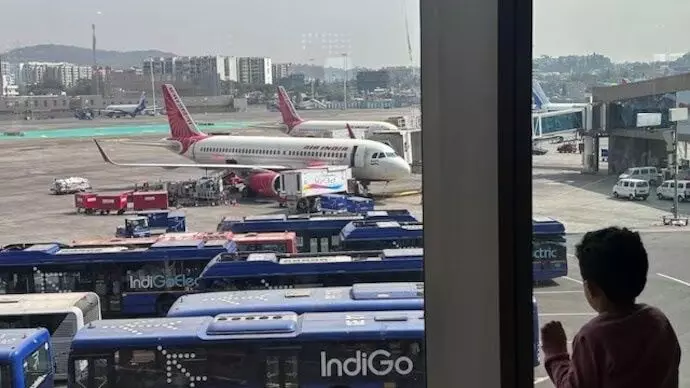Passengers Bear the Brunt: Airlines Hit with 85 Bomb Hoax Threats in One Day
Bomb Hoaxes Disrupt Flights and Heighten Security Concerns;

The plight of air passengers refuses to cease as a staggering 85 fresh bomb hoax threats were reported across various airlines on October 24, exacerbating an already tense travel environment. The latest wave of threats has cast a shadow over the aviation industry, affecting both domestic and international flights and leaving passengers to grapple with immense uncertainty and anxiety.
In just the past week, the schedules of many airlines have been thrown into disarray due to these false alarms. Major carriers including IndiGo, Vistara, Akasa Air, and Air India faced significant disruptions, prompting heightened security measures that only added to passenger woes. IndiGo and Air India were particularly hard hit, with 20 and 18 hoax threats, respectively, forcing both airlines to scramble in response to these alarming incidents. Akasa Air also reported approximately 14 bomb threats, with the airline assuring passengers that their emergency response teams were actively monitoring the situation in coordination with security and regulatory authorities.
The trend of bomb hoaxes is not new, but its escalation has left passengers feeling vulnerable. Just two days prior, on October 22, nearly 50 bomb threats were reported by various domestic and international carriers, affecting 13 flights each from Air India and IndiGo, as well as 12 flights from Akasa Air and 11 from Vistara. On October 21, a further 30 flights were targeted by similar threats, demonstrating a troubling pattern that has left many feeling anxious about their travel plans.
Financially, the repercussions of these hoaxes are staggering. On average, disruptions to a domestic flight can cost around ₹1.5 crore, while international flights can incur expenses of ₹5-5.5 crore due to the heightened security protocols and operational delays. These figures reflect not only the economic toll on airlines but also the ripple effects on travelers whose plans are compromised.
In response to the ongoing crisis, the government has indicated plans to implement legislative measures aimed at combating bomb threats, including the possibility of placing offenders on a no-fly list. However, the immediate focus remains on ensuring passenger safety. When a bomb threat is reported mid-air, a comprehensive security protocol is triggered, involving a Bomb Threat Assessment Committee (BTAC) that comprises representatives from the Central Industrial Security Force (CISF), Bureau of Civil Aviation Security (BCAS), the concerned airline, and the airport operator.
If an aircraft receives a bomb threat, protocol dictates that it may be diverted to the nearest suitable airport for safety. Upon landing, a thorough security screening is conducted for both the aircraft and passengers’ luggage, a process that can take several hours and requires meticulous coordination among security agencies and airline personnel.
The emotional toll on passengers cannot be overstated. The uncertainty of flying amidst a backdrop of bomb threats has led to widespread frustration and fear. Travelers now face not just the logistical nightmare of delayed flights but also the psychological burden of wondering whether they are truly safe in the skies.
As the aviation industry grapples with these challenges, one thing is clear: the ongoing spate of bomb hoaxes is not just a threat to airline schedules, but a deeply distressing ordeal for passengers who only wish to reach their destinations in peace.

